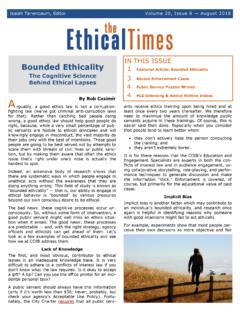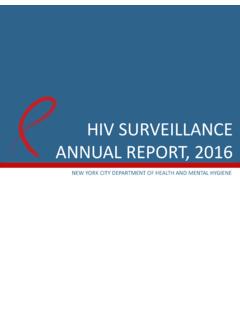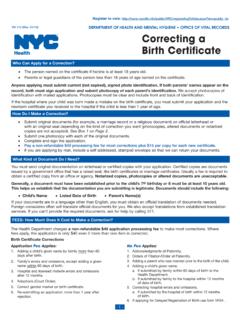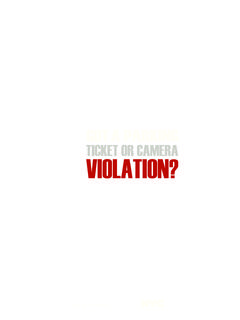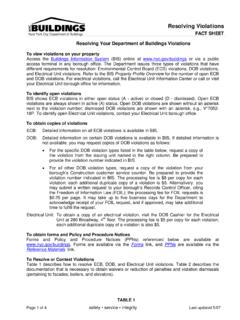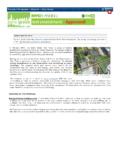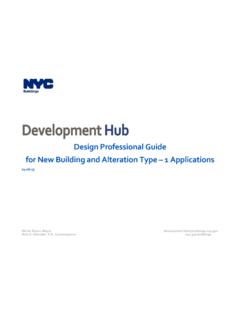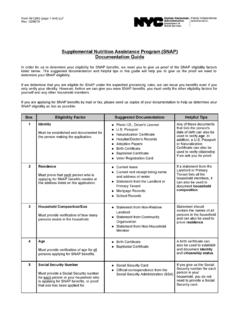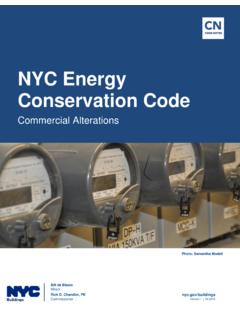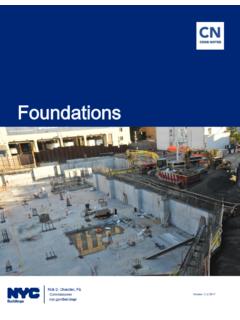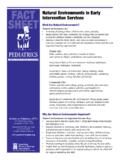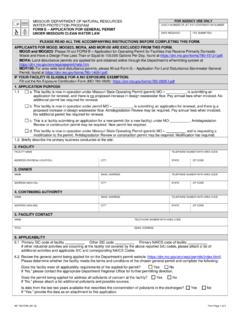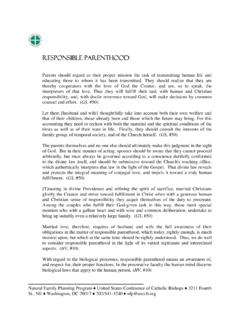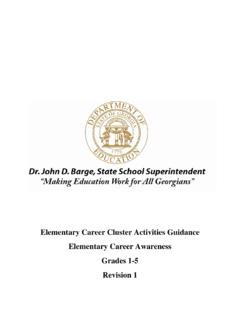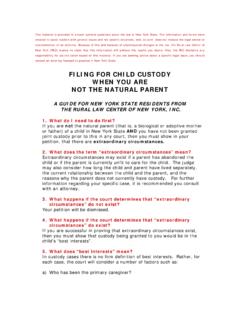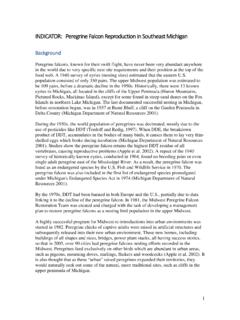Transcription of NYC Commission on Human Rights Legal Enforcement …
1 Bill de Blasio, Mayor | Carmelyn P. Malalis, Chair/Commissioner | | @NYCCHR Central Office Address: 22 Reade Street New York, NY 10007 NYC Commission on Human Rights February 2019 Legal Enforcement Guidance on Race Discrimination on the Basis of Hair Anti-Black racism is an invidious and persistent form of discrimination across the nation and in New York City. Anti-Black racism can be explicit and implicit, individual and structural, and it can manifest through entrenched stereotypes and biases, conscious and unconscious. Anti-Black bias also includes discrimination based on characteristics and cultural practices associated with being Black, including prohibitions on natural hair or hairstyles most closely associated with Black Bans or restrictions on natural hair or hairstyles associated with Black people are often rooted in white standards of appearance and perpetuate racist stereotypes that Black hairstyles are unprofessional.
2 Such policies exacerbate anti-Black bias in employment, at school, while playing sports, and in other areas of daily living. The New York City Human Rights Law ( NYCHRL ) protects the Rights of New Yorkers to maintain natural hair or hairstyles that are closely associated with their racial, ethnic, or cultural For Black people, this includes the right to maintain natural hair,3 treated or untreated hairstyles4 such as locs, cornrows, twists, braids, Bantu knots, fades, Afros, and/or the right to keep hair in an uncut or untrimmed5 1 The phrase Black people includes those who identify as African, African American, Afro-Caribbean, Afro-Latin-x/a/o or otherwise having African or Black ancestry.
3 2 Hair-based discrimination implicates many areas of the NYCHRL, including prohibitions against race, religion, disability, age, or gender based discrimination. This Legal Enforcement guidance seeks to highlight the protections available under the NYCHRL for people who maintain particular hairstyles as part of a racial or ethnic identity, or as part of a cultural practice, regardless of the mutable nature of such characteristics. Covered entities with policies prohibiting hairstyles associated with a particular racial, ethnic, or cultural group would, with very few exceptions, run afoul of the NYCHRL s protections against race and related forms of discrimination.
4 While this Legal Enforcement guidance focuses on Black communities, these protections broadly extend to other impacted groups including but not limited to those who identify as Latin-x/a/o, Indo-Caribbean, or Native American, and also face barriers in maintaining natural hair or specific cultural hairstyles. 3 Natural hair is generally understood as the natural texture and/or length of hair; it is defined as hair that is untreated by chemicals or heat and can be styled with or without extensions. The term natural hair, which has specific and significant cultural meaning within Black communities, is used throughout this guidance in reference to hair textures most commonly associated with Black people.
5 However, the Legal protections available under the NYCHRL extend beyond natural hair, including treated hair styled into twists, braids, cornrows, Afros, Bantu knots, fades, and/or locs. 4 Hairstyles most commonly associated with Black people include hairstyles that involve some form of heat or chemical treatment or none at all ( , natural hair ). 5 For communities that have a religious or cultural connection with uncut hair, including Native Americans, Sikhs, Muslims, Jews, Nazirites, or Rastafarians, some of whom may also identify as Black, natural hair may include maintaining hair in an uncut or untrimmed state. 6 This is not an exhaustive list of hairstyles most closely associated with Black people.
6 For more background, see Section II of this Legal Enforcement guidance. 2 While grooming and appearance policies adversely impact many communities, this Legal Enforcement guidance focuses on policies addressing natural hair or hairstyles most commonly associated with Black people, who are frequent targets of race discrimination based on hair. Accordingly, the New York City Commission on Human Rights (the Commission ) affirms that grooming or appearance policies that ban, limit, or otherwise restrict natural hair or hairstyles associated with Black people7 generally violate the NYCHRL s anti-discrimination provisions. I. The New York City Human Rights Law The NYCHRL prohibits discrimination by most employers,8 housing providers,9 and providers of public The NYCHRL also prohibits discriminatory 7 Grooming or appearance policies that generally target communities of color, religious minorities, or other communities protected under the NYCHRL are also unlawful.
7 Examples of religious, disability, age, or gender based discrimination with respect to hair include: a Sikh applicant denied employment because of his religiously-maintained uncut hair and turban; an Orthodox Jewish employee ordered to shave his beard and cut his payot (sidelocks or sideburns) to keep his job; a Black salesperson forced to shave his beard despite a medical condition that makes it painful to shave; a 60 year-old employee with gray hair told to color their hair or lose their job; or a male server ordered to cut his ponytail while similar grooming policies are not imposed on female servers. 8 The NYCHRL prohibits unlawful discriminatory practices in employment and covers entities including employers, labor organizations, employment agencies, joint labor-management committee controlling apprentice training programs, or any employee or agent thereof.
8 Admin. Code 8-107(1). Under the NYCHRL: The term employer does not include any employer with fewer than four persons in his or her employ .. [N]atural persons employed as independent contractors to carry out work in furtherance of an employer s business enterprise who are not themselves employers shall be counted as persons in the employ of such employer. Admin. Code 8-102. The term employment agency includes any person undertaking to procure employees or opportunities to work. Id. The term labor organization includes any organization which exists and is constituted for the purpose, in whole or in part, of collective bargaining or of dealing with employers concerning grievances, terms and conditions of employment, or of other mutual aid or protection in connection with employment.
9 Id. 9 The NYCHRL prohibits unlawful discriminatory practices in housing, and covers entities including the owner, lessor, lessee, sublessee, assignee, or managing agent of, or other person having the right to sell, rent or lease or approve the sale, rental or lease of a housing accommodation, constructed or to be constructed, or an interest therein, or any agent or employee thereof. Admin. Code 8-107(5). Covered entities also include real estate brokers, real estate salespersons, or employees or agents thereof. Id. The NYCHRL defines the term housing accommodation to include any building, structure, or portion thereof which is used or occupied or is intended, arranged or designed to be used or occupied, as the home, residence or sleeping place of one or more Human beings.
10 Except as otherwise specifically provided, such term shall include a publicly-assisted housing accommodation. Admin. Code 8-102. However, the NYCHRL exempts from coverage: the rental of a housing accommodation, other than a publicly-assisted housing accommodation, in a building which contains housing accommodations for not more than two families living independently of each other, if the owner [or] members of the owner s family reside in one of such housing accommodations, and if the available housing accommodation has not been publicly advertised, listed, or otherwise offered to the general public; or (2) to the rental of a room or rooms in a housing accommodation, other than a publicly-assisted housing accommodation, if such rental is by the occupant of the housing accommodation or by the owner of the housing accommodation and the 3 harassment11 and bias-based profiling by law Pursuant to Local Law No.
